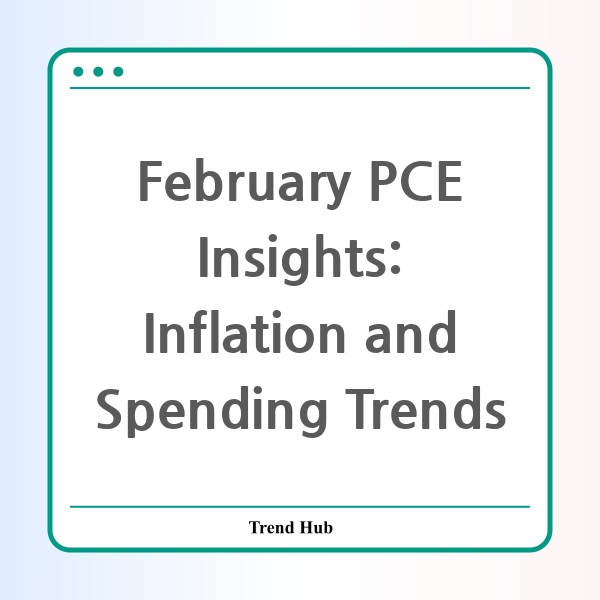* This website participates in the Amazon Affiliate Program and earns from qualifying purchases.

Are we witnessing a shift in consumer spending and inflation trends? February has been a month of mixed signals as the latest data reveals a significant increase in core inflation while consumer spending shows a modest rise. The core Personal Consumption Expenditures (PCE) price index, a crucial metric for the Federal Reserve, recorded a 0.4% increase in February, pushing the 12-month inflation rate up to 2.8%. This rise came in hotter than expectations, indicating a potential shift in the economic landscape.
This spike in core inflation was significant, as it indicates persistent inflationary pressures even in a climate of fluctuating consumer behavior. Economists had predicted a core inflation rate of only 2.7%, suggesting that the economic recovery and consumer confidence may not be as straightforward as some had hoped. Notably, the broader PCE index reflected a 0.3% increase on the month and a steady 2.5% rise year-over-year.
Consumer spending has rebounded, but is it enough? In February, consumer spending saw a boost of 0.4%, which although positive, was below the analysts' forecast of 0.5%. Encouragingly, personal income rose by 0.8%, outpacing the estimated 0.4%. Higher personal income typically leads to increased consumer spending, yet the data suggests that households are becoming more cautious with their finances, as evidenced by the rising personal saving rate, which reached 4.6%, the highest since June 2024.
As consumer spending slightly shifts upward, experts express concerns regarding the impact of current trade policies and impending tariffs, particularly under President Trump’s administration. These tariffs, notably on auto imports, could stifle economic growth and potentially lead to higher prices on goods, complicating the inflation narrative.
What do the numbers mean for future Federal Reserve actions? The Federal Reserve closely monitors the PCE index to gauge inflation trends. With inflation exceeding expectations, the central bank's path to adjusting interest rates remains unclear. Analysts suggest that the current economic data does not warrant an immediate response, as the Fed appears to be taking a ‘wait-and-see’ approach. Ellen Zentner, chief economic strategist at Morgan Stanley, highlighted that today’s inflation reading, although hot, does not signal an acceleration in the Fed’s timeline for rate cuts, especially amid uncertainties regarding tariffs.
This complexity within the economic framework raises questions among economists and investors alike. While some view tariffs as temporary shocks that may not lead to long-lasting inflation, others remain wary of their broader implications on consumer behavior and spending. The rise in prices, particularly in various sectors, such as recreational goods, indicates potential strain on consumers who may prioritize savings amid uncertainty.
The data for February paints a picture of a resilient economy but also reveals a delicate balance that policymakers must navigate. As inflation holds above the Fed’s target rate and tariffs loom on the horizon, the interplay between consumer spending and economic policy becomes increasingly critical. Citizens, businesses, and investors must remain vigilant in observing how these trends evolve in the upcoming months.
In conclusion, February’s PCE data illustrates the complexity of current economic conditions. While consumer spending has shown signs of recovery, rising inflation rates combined with potential trade impacts pose challenges that require careful consideration from both policymakers and consumers.
* This website participates in the Amazon Affiliate Program and earns from qualifying purchases.